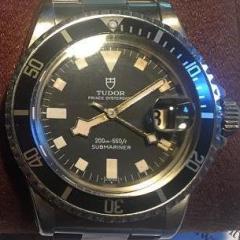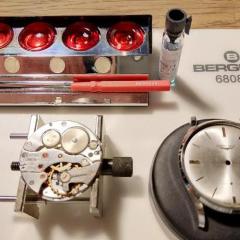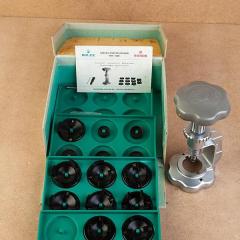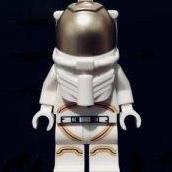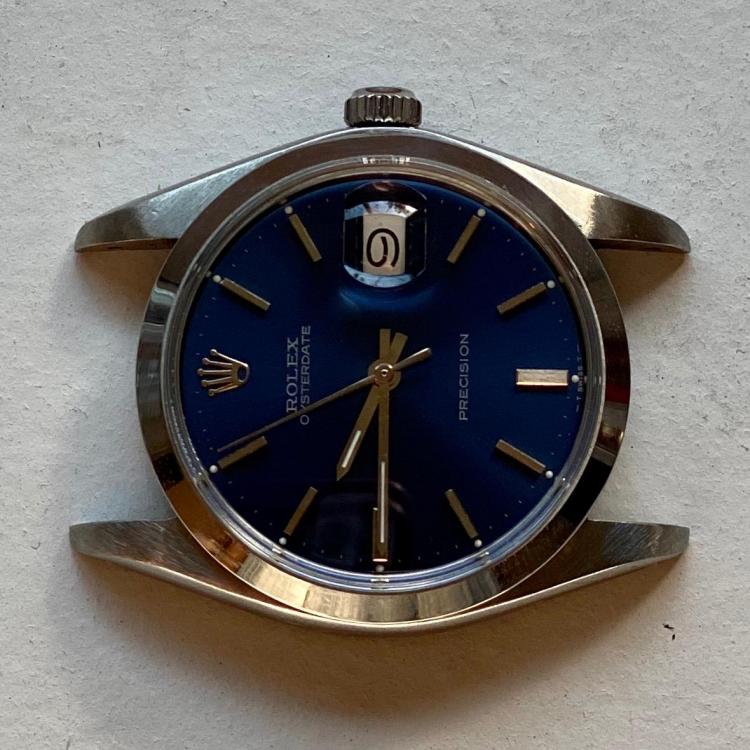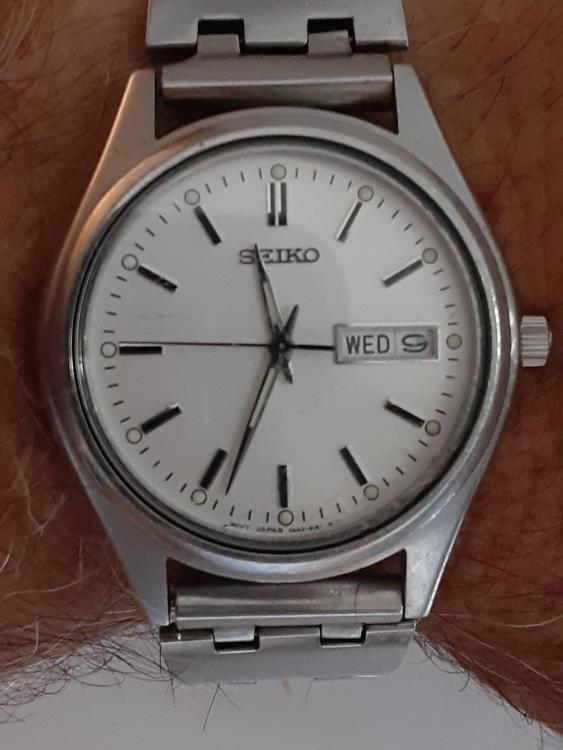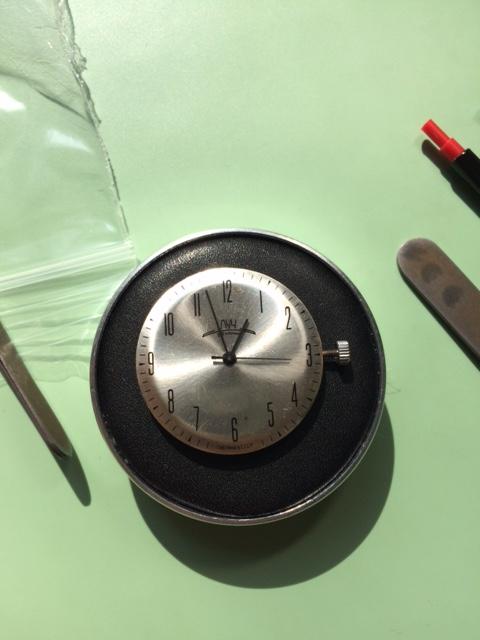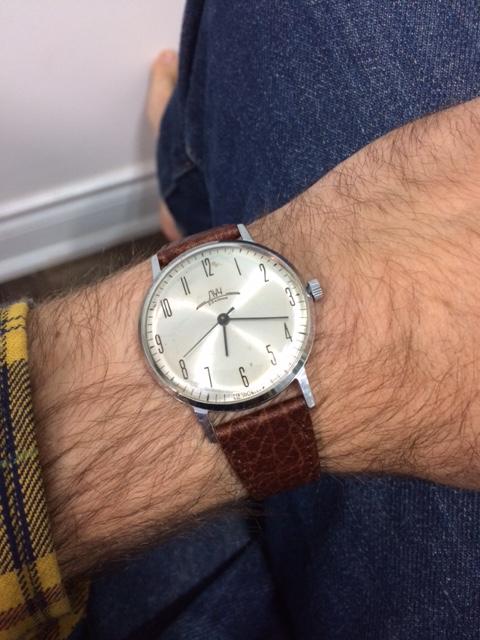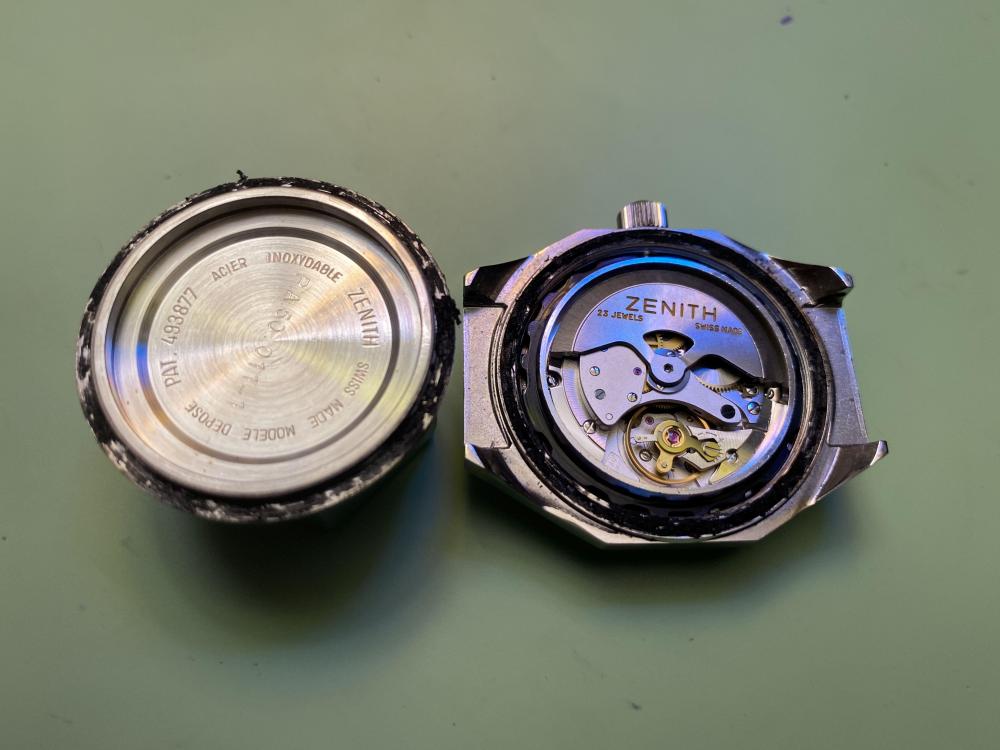Leaderboard
Popular Content
Showing content with the highest reputation on 09/10/20 in all areas
-
Do not skimp on tweezers. I got myself a new set of Dumont anti-magnetic tweezers to replace my previous Swiss made, but generic, ones. WOW. So much easier to work. I may add to the arsenal on my next order. Really, the tools you use the most should be of the highest quality. Tweezers, screwdrivers and your loupe. Other tools used less often can cut corners a bit. Burgeon is the brand everyone knows (like Snap-On), but I’ve found A-F tools to be quite good and generally less expensive. I’ve also found dedicated OEM tools to often work better than generic. I have a Rolex case tube tool and it works better/nicer than the cheap-o tool I stripped and the nicer steel tool that replaced it, but that’s a bit small. But I fiddle with Rolex and Tudor a lot so it made sense buying that.2 points
-
Hello, I can already tell this forum is going to be and incredibly valuable resource. I am a flea market addict and recently stumbled upon an old Parker with a Valjoux 22 for $5 in a box of junk watches. I'm not going to start my repair journey there but hope to work my way up to getting that thing running again. That's assuming I don't need too many very expensive and hard to find parts.1 point
-
Hello everyone! My name is Benjamin Marn, I am a 20 year old college student who has been interested in horology for about 4 years now. I have since aspired to be an independent watchmaker, most likely as a hobby or a side gig but possibly as a full time career, assuming people appreciate the watches I would design and build. More immediately, I have been planning to make my own bespoke, finely finished watchmakers tools, everything from tweezers to mainspring winders, to jeweling and staking tools, as I am fortunate enough to have access to a 1934 South Bend lathe, a 40's LeBlond lathe, a surface grinder, and a Bridgeport mill. Eventually I would like to build my own watchmakers lathe in the style of a Bergeon 50, from my own iron castings (I also have access to a furnace that is hot enough to melt iron), and after that, perhaps even a rose engine.Hopefully, I will build up a collection of tools that exceeds the quality of brands like Horotec and Bergeon at a price of only the raw materials and the time taken in the machine shop, which I enjoy anyway. In the meantime, I have slowly begun to build up my library of books, starting of course with the great George Daniels' Watchmaking, but I am always looking for more books, especially on the theory behind horology and movement design, as right now one of my biggest struggles is grasping the concepts behind gear trains, tooth counts, mathematical ideas, etc etc. I am also a bit of a visual learner, and another thing I struggle with is visualizing the complex diagrams and explanations of the complications in Daniels' book. Perhaps that's why I like Mark's channel so much, I can see things like keyless works in action.1 point
-
Was late trying to complete a repair and was tired. Got the Keyless works done and only thing left was the Pallet fork and the Balance complete which I didn't have installed yet. Started to wind the watch but was not getting any resistance from the mainspring. I stop and though was did I do wrong. So I pull the mainspring bridge back off, took out the the barrel, pop the lid and took a look at the mainspring, looks good, what the you know what's going on. Got everything back together then it hit me , you dummy the Pallet fork not in yet to hold the power. Moral of the story "No more work after 10pm.1 point
-
I'd be down for a camera repair thread! And I've been interested in experimenting with a pair of inexpensive P&S cameras that I could somehow sync for stereo photography. Dang, now I need to research how cheaply I can score a couple of A2200s (and whether there's already a turnkey sync cable of some sort). See, e.g, this 3D printable stereo rig. It'd be great for still lifes, but would need some sort of sync utility for other stereophotography. ... It's good to be a nerd, and to find like-minded nerds on the Internet. This forum is awesome.1 point
-
"Ugly" and "Bargain" grade stuff from KEH was my bread and butter. I think that my full Mamiya RZ67 system, including a metering prism and some really awesome lenses (including the luscious 110mm f/2 lens, the 140mm f/4.5 FLE macro, and the 180mm f/4.5), was less than $400. Mamiya's 180mm f/4.5, both the RB and RZ versions, is the best lens I've ever used in over 20 years of photography. My second favorite is the gloriously fast and imperfect Minolta 58mm f/1.4 -- it's like a 10th of the cost of the f/1.2 version, is way easier to use, and has a better rendering IMO. My third favorite lens is the 50mm f/2 Schneider Xenon lens that comes attached to a Retina IIa -- a camera I've previously mailed to New Zealand for repair. The limits of my camera repair skills start and end with the Argus C3. ;-) Your story sounds fascinating @nickelsilver! (Oh, and for photography geeks: my Avatar is a cyanotype printed on cloth from an iPhone shot I converted into a digital negative (printed in negative on transparent paper with pigment inks) with added embroidery. It's NSFW, but my photography portfolio is at https://www.iggybug.com/)1 point
-
Maybe we should start a new thread related to camera repair. I have one or two specimens that needed some TLC when I picked them up from various flea markets and jumble sales. I even have a medium format, and a large tripod that were recovered from two separate skips (dumpsters). The PowerShot A2200 is one of a bunch of damaged Canons I picked up for pennies on ebay a while back when I was active on the CHDK development forum and Wiki. You may recognise this guy. https://chdk.setepontos.com/index.php?topic=10728.101 point
-
I’ve covered this before here, so please search, but the height of the spring has a linear relationship with the force it produces. However force is related to the cube of the thickness. That’s why it is more critical in terms of force (torque developed). In terms of height, it needs to fit the barrel snugly.1 point
-
Carrying on in derailing, I used a lot of vintage cameras in the 90s, Rollies, Mamiya (medium format) and got hooked on Voigtlander 35mm stuff too. Being poor I bought a lot of "ugly" grade stuff from KEH in Atlanta which was often functional but manky but sometimes needed a service. Fixing those cameras was my start into fine mechanics and set me on the path to watchmaking (a Voigtlander Bessamatic makes a perpetual calendar look easy haha). A lot of Ronsonol and 3n1 oil on those early attempts, funnily they still work 25 years later! Then I bought some Dumont #3 tweezers and a ladies Seiko automatic from a thrift store and a little schooling later now I live in Switzerland.1 point
-
Neat idea. I may borrow some cues from that design. The Canon Powershot A2200 I used runs CHDK, so I can get RAW images form it, and RawTherapee will do the lens correction. It has built in Canon Powershot lens profiles or you can define your own, and it can convert negatives to positives including acceptable orange colour mask removal with different masks predefined, or using the unexposed area round the negative. It also batch processes, so the work flow is actually quite simple. feed the negatives through my widget on top of the lightbox. Click away. Post process in RawTherapee, then do any final tinkering in Gimp or DarkTable. I thought trichloroethylene had completely fallen out of favour. In the past I have used it for PCB cleaning amongst other things, and yes, it is pretty aggressive and somewhat hazardous. Don't drink it while chewing on your radium lumed hands and you should be just fine.1 point
-
I'm a little biased since I'm a sucker for all vintage Valjoux based watches. The movement in this seems to be complete and in not to bad shape, so to service it and invest in a new mainspring is for me a no brainer. The fact you only spent 5$ up to now makes this a fantastic find. The pitting in this style of case is quite common but in all I must say it is a quite charming piece.1 point
-
As mentioned the Seiko casing guide has been repeatedly uploaded to this forum already. All is needed is to enter "casing guide" with quotes in the search box top right, or here it is again 1982.03 Seiko Case Servicing Guide.pdf There are also extracts of old case parts list, which one can also find with the same search.1 point
-
interesting timing for me to see this question. Someone else was looking for a citizen watch guide I tracked it down on the Internet for them. While I was there I saw a reference to the Seiko guide found at the link below you want to download the casing section as it covers lots of different casing scenarios for Seiko. https://www.thewatchsite.com/threads/seiko-watch-technical-guide-hires-color.1801/#post-87491 point
-
it's amazing what you can find online if you just do a search. It also helps seven clue of what you're looking for. At the link below is a service guide for Citizen watches I would suggest downloading the entire thing. As far as an individual tech sheet for every single watch in existence they just do not exist for the most part. https://www.thewatchsite.com/threads/1971-citizen-technical-information.171138/#post-13673861 point
-
1 point
-
I did a "DIY" ebay build and I've changed batteries, crystals etc... with tweezers from my "IFIXIT" toolkit that I use for computers. Since I've been wanting to learn how to dissassemble and service a watch I splurged on Dumont 5 and Dumont 7 on cousins as well as a second hand Horotec set of brass B1 B5 S5 tweezers. I had the chance of playing with them 2 days ago while taking apart a seiko for training purposes and today for cleaning these parts. By gosh what a difference they make ! Picking up is much easier, the fit in hand and control over them is great. I do not regret my purchase. I'd also say decent screwdrivers, I got the 9 set from cousins (I believe it's the set they replaced their A&F set with) and I find them easier to use and fit better than the cheap Anchor 5 set I had1 point
-
Normally they do for orders shipped to EU countries, unless the buyer has entered and validated an EU VAT id. If OP has paid VAT to Cousins all he has to do is to show Post that on the invoice. If he has not paid VAT by having his VAT ID in Cousins, then he's correct that the previous customs and VAT treatment (not a preliminary agreement) has been extended until end of 2020, and should point out that. As Mark said in no case the OP can be charged VAT twice, or any custom duties. At the same time we know that Sweden is one of the strictiest countries when it comes to collecting fees on packages, there isn't even an allowance as most other countries have.1 point
-
You wont need any of the tools suggested here, if you can't get the back plate open first.1 point
-
Well, let's be clear - looking at the title of this thread people could assume the VAT and Customs charges are from Cousins when clearly they are from your countries government. Or did Cousins ALSO charge UK vat (20%) on your order? In other words, if you have been DOUBLE charged duties from both countries then maybe you need to seek advice from a TAX lawyer to claim back either the UK levy or the Swedish levy. I live in Thailand and have been waiting for a package from Cousins to clear customs for the past week Cousins did not charge VAT as it is an export, and VAT was 7% and customs duty normally 5% they decided would be 10% because they say watch repair tools should be at a higher rate (crazy but true) PLUS I had to pay a fee to UPS for clearing services and another bullshit charge I cant even work out was for, but I can't do nothing about it so I accept it if I want to import products from other countries. I am not a huge fan of Cousins, but it's clearly not their fault that governments rake these TAX's from us - the money doesn't go in their (cousins) pockets!1 point
-
1 point
-
1 point
-
"the wrench that removes the stem collet out of the vintage pocket watches." since this is an area often rusted. the tool shoud good quality steel and get 2 as they are very fragel. vin1 point
-
1 point
-
Yes I know its quartz. But the watch came minus stem and crown ,the seller made an offer I couldn't refuse. I just swapped in a vx43 movement and Installed a new crown.Easy as pie. It wears it's original knicks and dings ,and keeps time in typical Seiko fashion.its a 7n43 9181. S/N 812266 eighties vintage I reckon.1 point
-
Aloha, welcome here, be aware...you will spend a LOT of time here as a lot of us watchaholics1 point
-
So far so good... Movement is up and running decently with amplitude around 250 and close to zero beat error. Currently off by around +20 sec dial up/down so should be tweakable. Photo as assembled in cleaned and a bit polished casing with new crystal and re-lumed hands is attached. I guess I will have to get that centersec-wheel and fit a sec hand before the adventure is over...:-) I like it when a 2,5 euro investment can be turned around to something decent. Sent from my iPad using Tapatalk1 point
-
You have to remove the bezel before you remove the crystal. The bezel actually clamps the crystal in place, if you try to push off the crystal with the bezel in place the result is what you now have.1 point
-
unless you're lucky enough to find somebody that's worked on one I don't think you enough information. The link below just because I like to see a picture of what somebody's working on. Then I snipped out the sections of the 505 and 501 tech sheet and they look like stems. The only difference in the picture is one is for a split stem case and the others for standard case. On the link below there is a reference to using a different stem for cases that do not support having the recess. if the movement is out of the case is the quickset functioning working? The obvious is somehow there's a difference in the stems. If the watches in a case it doesn't have the recess then your crown probably is out a little bit further than normal. In other words you still have to have space to build push the crown in. Looking at the watches on eBay it looks like a lot of the crowns are sticking out. So somebody didn't understand this and fit the crown the way you normally would. Isn't enough space to push the stem with crown in. She is needed new stem and just make it a little bit longer if I'm interpreting this stuff correctly. http://www.ranfft.de/cgi-bin/bidfun-db.cgi?10&ranfft&0&2uswk&Longines_5051 point
-
Part 3 is a sort of redemption, or at least some lessons learned. The donor arrived about six weeks later (thank you Covid) and I quickly transferred the balance complete. The wavy traces quickly returned. So I stripped the movement again, paying close attention to the barrel arbor bearings. Looking closely, I could see that the barrel had actually been scraping the bottom of the barrel bridge. Manipulating the barrel with the bridge on and the train removed, I could also see that, under torque, the barrel would foul both the bridge and possibly the mainplate. Swapping in the donor movement bridge, the wavy traces continued. The free running of the train was okay with the pallets removed, but, turning my attention to the mainplate barrel arbor bushing, I could see this was slightly out of round. Under torque, the barrel would still hit the bridge. So that was it. I could not close the barrel arbor bearing hole, so after repeated reassemblies and inspections, I became convinced that the original movement was a goner. Thankfully, I had the donor, which I decided to service and install in the watch. In truth, the donor looked to have very little wear - I am unsure what kielbosched it in the first place. I serviced the donor and prepared to install the balance complete. Here tragedy struck again, as it appears that one of the problems in the donor was that the regulator arm was improperly seated in the balance cock, or the pins were just too short. Closing the regulator pins, the hairspring caught the closing arm and became kinked in the terminal curve. Here I finally did Mark's video justice, carefully massaging the hairspring until it was again smooth throughout the curve. A final hurdle: the balance on the donor movement had no endshake - none at all. Having watched Mark's video on unexpected endshake problems, I looked for a shim under the balance cock. Sure enough, Minsk Watch Factory had indeed made a shim under the cock, near the screw, which I had flattened as I had rubbed the tarnished mainplate with pegwood. So I got my screwdriver, and made a painful jab into my newly-cleaned donor movement. Reinstalling the cock, it ran strongly! Hurrah. Here are the results, positive and negative. On the positive, the watch runs strongly and relatively straight in all positions. There is also relatively little positional error (maybe 5-10 seconds a day, but I can live with that). But here's the heartbreaking thing. This donor, this seemingly babied donor with no major signs of wear, has exactly the same problem of wavy traces and variable amplitude as the original movement! It's less pronounced, sure, but it's there - a 15-20 degree variability in amplitude at seemingly random intervals, with the associated wavy lines. A reflection on that below. Battle-ready once again, but not without difficulty. Another charm(?) of the Luch is that the dial does not sit flush with the movement, so you need to be extremely careful when seating the hands to make sure they won't hit the dial. And back on my wrist, at long last. So, a summary. Why should you, an absolute beginner, try to diagnose and fix a battered Russian watch that hasn't been opened since Gorbachev? Well, first, you won't break the bank. These are plentiful, and if you get a plain dial they are cheap as chips. Second, you will use a lot of Mark's lessons. Not just chapter 2, but 3 as well. I watched every single video repeatedly, and tried to apply them all. If not for his video on barrel arbor bearing wear, I would never have found the problem. Last, I practiced a lot - a lot - of skills. I'm still bad, but getting this Luch back on my wrist has made me feel like I'm on the road to being a real watchmaker, whatever that means. And why should you avoid articles like this? One reason: poor, inconsistent build quality. From the shim, to the regulator pins of incorrect length, to the badly-seated dial, it doesn't take a George Daniels to see that these things were absolutely slapped together. This makes them hard to work on and diagnose. And even when you find a good donor that was seemingly retired after only a few years in service, you may find that it has the same fundamental problems as the donor you thought was deeply, unusually defective. So just live with it, and know when good is good enough. Don't make perfect the enemy of the acceptable, because they sure didn't when they built these things in the first place. So that's it. If you're exceptionally patient or you didn't have anything better to do tonight, thanks for reading this far. And thanks to the people on this forum for helping me out with this project - I am very glad I joined. Cheers!1 point
-
I pull the regulator arm too, without seeing underneath you wouldn't know, then if tg tells you something is wrong, you pretty well end up overhaulihg twice. Do it right, Do it once.1 point
-
Now that the back is off you can clean up the gasket mass. Now that the backs off we can see the watch I would probably drop the word vintage off for the description. Anytime you use the word vintage in watch repair the price goes up considerably. If there's fear of availability of parts the price will go up. So if you're just getting an automatic watch serviced the cost should drop by quite a bit.1 point
-
Well, that was so easy as to be anticlimactic. I figured 30 minutes was enough curing for a glue I would be removing with acetone anyway, so I gave it a shot using my desktop jeweler's vise (cushioned by some soft plastic). I wouldn't have tried this without a case vice except that I noticed the design of the lugs gave two nice reinforced perpendicular surfaces that would fit easily into a jeweler's vice without significant risk of damage. Slow, even pressure with a 1 1/8" wrench opened the caseback on my first attempt. Easy peasy. Thanks all for the advice!1 point
-
Didn't you know all us old retired watchmakers glow in the dark.1 point
-
Like others on here I don't restrict myself to just one set of screw drivers. I have one set ground to a thinner profile, and another set ground to a slightly fatter profile. I also have numerous screw drivers ground to extra thin and extra fat. As a rule I find that Swiss screw slots are thinner than Japanese, Quartz movements tend to have a few have extra fat slots, very old pocket watches seem to have extra thin slots. This sounds like an expensive investment in screw drivers but I have probably spent less on my multiple sets than many others have on just one as I have picked them up second hand and in job lots from all over the place. They are good quality, vintage, French or Swiss. They don't necessarily have the silkiest smooth ball bearing tops to them but they are perfectly functional. If you generally work on the same type of movements (pocket watch, or Japanese, or Russian for instance) then one set of screw drivers tailored to that specific family of watch movements is all you need. As for throwing away old blades it does seem a bit of a shame. Generally speaking all that is needed to bring a chipped blade back into trim is 5 minutes on a stone (or decent quality wet & dry paper on a sheet of glass, or your diamond stones). If you find that you are regularly suffering from chipped blades then it might well be worth exploring the possibility of adjusting the temper of the blades. If you get it right you not only get more resiliant blades which are less likely to scratch movement plates, but you also gain an understanding of heat treatments for steel on a macro or even micro scale. Useful stuff.1 point
-
0 points




